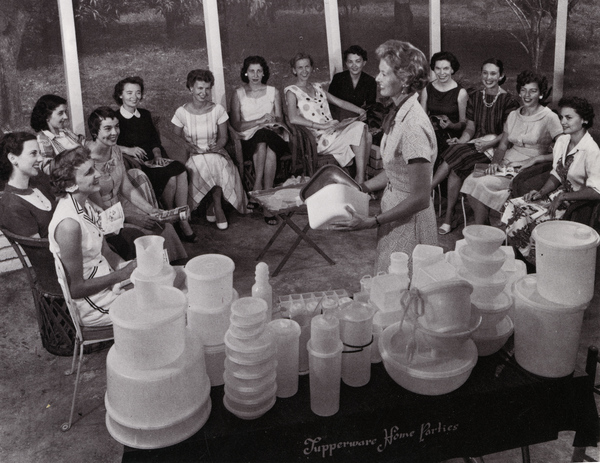
As the COVID-19 recession deepens, many of us have been receiving more calls from long-lost friends or relatives selling energy drinks, workout videos, jewelry, or various household goods. In the absence of social insurance policies to soften the pandemic’s devastating toll, more and more Americans desperate for financial stability are turning to multilevel marketing (MLM), also known as direct sales or network marketing to provide for themselves and their loved ones. For decades, MLMs have offered participants flexible hours, a support network of other dedicated sellers, and the tantalizingly elusive promise of getting rich to those facing uncertainty.
But these programs promise more than just an opportunity to flex your entrepreneurial skills. Apart from selling, these multilevel marketing programs offer participants the promise of luxury cars, tropical getaways, and an end to financial squalor for those who work hard enough. But how does this industry work? Social science research points to this decades-old business model’s potential pitfalls for disadvantaged participants.
Business structure
From essential oils to protein powder to plus-sized clothing and just about everything in between, MLMs sell a wide range of consumer goods. Here’s the catch: you can’t buy these items online or in stores. Sellers – “distributors” in direct sales parlance – purchase product in bulk from companies (think Avon, Herbalife, LulaRoe, Plexus) to sell to friends, family, and contacts. While companies profit from these transactions, sellers seldom see these dollars themselves. To profit, these distributors must recruit new team members. The more members – or “downlines” – on their “team,” the higher commission the “upline” – the recruiters – receives. Perhaps unsurprisingly, given the high start-up cost and lack of benefits, research from the AARP suggests that 73 percent of those who participate in MLMs lose or make no money at all, deepening the vulnerability of already disadvantaged participants.
- Nina Bandelj. 2020. “Relational Work in the Economy.” Annual Review of Sociology 46(1):251–72.
- Brian Bloch. 1996. “Multilevel Marketing: What’s the Catch?” Journal of Consumer Marketing 13:18–26.
- Curtis Child. 2021. “How to Sell a Friend: Disinterest as Relational Work in Direct Sales.”Sociological Science 8:1–25.
Direct sales and gender
Since its inception at the turn of the 20th century, the predominantly male traveling sales industry evolved into the female-dominated MLM model we know today. To curb the unsavory reputation itinerant sellers engendered – reputations commonly laced with antisemitic tropes and xenophobic stereotypes – companies began culling vendors from a more acceptable population: middle-class, predominantly white women and, at first, young college students. With companies pledging flexible hours and easy sales to their social circles, this business model took off following WWII. Tupperware revolutionized the way products were sold; instead of door to door sales or sales calls, buyers — mostly unemployed housewives — attended parties filled with product demonstrations and socializing. While social media and the internet have changed the nature of direct marketing, feminized notions of work and domestic responsibility still permeate this market, from the products sold (cleaning products, kitchen supplies) to the emotion-laden bonds forged within teams of distributors. Such MLM opportunities remain attractive, in part, due to the persistence of sex discrimination in employment, and the antiquated expectations that still limit women’s earning potential, self-image, and job prospects.
- Virginia D’Antonio. 2019. “From Tupperware to Scentsy: The Gendered Culture of Women and Direct Sales.” Sociology Compass 13(5):e12692.
- Jamie L. Mullaney, and Janet Hinson Shope. 2012. Paid to Party: Working Time and Emotion in Direct Home Sales. New Brunswick, N.J: Rutgers University Press.
- Kenneth C. C. Kong. 2003. “‘Are You My Friend?’: Negotiating Friendship in Conversations between Network Marketers and Their Prospects.” Language in Society 32(4):487–522.
- Nicole Woolsey Biggart. 1989. Charismatic Capitalism: Direct Selling Organizations in America. Chicago and London: The University of Chicago Press. L. Susan Williams and Michelle Bemiller. 2011., Women at Work: Tupperware, Passion Parties, and Beyond. Boulder and London: Lynne Rienner Publishers.
Charisma and Risk
Much to the chagrin of regulatory agencies, many MLM products have been marketed as “cure-alls” for all manner of maladies and ailments. In April 2020, the FDA publicly chastised seven direct sales companies about misleading claims, arguing their products protected against coronavirus. Alongside these audacious claims, these companies have long used self-empowerment rhetoric to energize distributors and build their following. This charismatic language has drawn often vulnerable populations seeking economic stability and community into the MLM orbit. Research demonstrates how these emotion-laden themes work alongside promises of socioeconomic advancement to make multilevel marketing a promising career path for a wide variety of aspiring entrepreneurs and desperate sellers alike. Instead of offering financial security, MLMs dangle audacious promises and a competitive environment for individuals to pursue prosperity, often with little success.
- Stacie Bosley and Kim K. McKeage. 2015. “Multilevel Marketing Diffusion and the Risk of Pyramid Scheme Activity: The Case of Fortune Hi-Tech Marketing in Montana”. Journal of Public Policy & Marketing. 34(1):84–102.
- John Sparks and Joseph Schenk. 2001. “Explaining the effects of transformational leadership: an investigation of the effects of higher-order motives in multilevel marketing schemes”. Journal of Organizational Behavior. 22(8):849-869.
- Joyce Koe Hwee Nga and Soo Wai Mun. 2011. “The influence of MLM companies and agent attributes on the willingness to undertake multilevel marketing as a career option among youth”. Journal of Research in Interactive Marketing. 5(1): 50-70.
- Nicole Woolsey Biggart, 1989. Charismatic Capitalism: Direct Selling Organizations in America. Chicago and London: The University of Chicago Press. Peter S. Cahn. 2008.“Consuming Class: Multilevel Marketers in Neoliberal Mexico”. Cultural Anthropology.23(3):429-452.

Comments